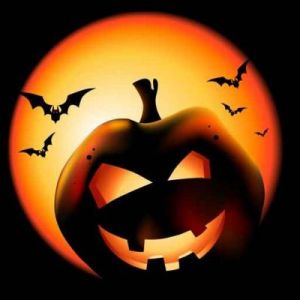Halloween Safety Tips
 Halloween has been celebrated on October 31st in the United States since the early 1800's and is traditionally a family-oriented holiday when children get to dress up and enjoy candy and other treats.
Halloween has been celebrated on October 31st in the United States since the early 1800's and is traditionally a family-oriented holiday when children get to dress up and enjoy candy and other treats.
In order to enjoy this fun-filled holiday as safely as possible, we have provided the following safety tips for children and parents:
- Children should trick-or-treat during daylight hours.
- Children should never be allowed to go out alone on Halloween.
- Children should never eat any treats until they have been examined.
- All fruit should be cut and and closely examined before eating.
- Advise children that they should never enter strangers' homes.
- Never invite children into your home.
- Children should never accept rides from strangers.
- Children should never take shortcuts through backyards or alleys.
- Set a specific time limit for your children to be out on Halloween night.
- Give wrapped homemade treats only to children you know.Instruct children not to stray from their group.
- A responsible adult should escort children while trick-or-treating.
- Adult escorts should carry flashlights.
- Don't leave your home unattended on Halloween night.
- Keep pets inside your home, or other safe place on Halloween night.
- Children should walk, not run, during their trick-or-treat activities.
- Parents should know what route their children will be taking.
- All costumes should be made of light-colored, fireproof material.
- Children should wear proper fitting, comfortable costumes and shoes.
- Props such as toy guns or swords should be made of pliable material.
- Realistic replica firearms should never be used.
- Masks should not be worn if they impair vision.
- Wigs should be fireproof and should not restrict vision.
- Children should always use sidewalks, not the street, for walking.
- Children should look in all directions before crossing the street.
HISTORY OF HALLOWEEN
Thousands of years ago Celtic people inhabiting the area that is now England, Ireland and Scotland celebrated their new year on November 1st. The Celtic religious order known as the Druids held a great festival each year on the evening before the their new year. This festival was celebrated in honor of the god, Samhain, the Druid god of death and was known as All Hallowtide. The Druids believed in the supernatural and tried to placate the Lord of Death with offerings.
They also believed that on this day, the souls of those who had died during the previous year began their journey to another world. Druids believed that souls of the dead returned to their former homes to be entertained by the living. Bonfires were built atop hills so they might find their way. Suitable food and shelter was provided for these spirits or else they would cast spells, cause havoc, steal infants, destroy crops, kill farm animals and create terror as they haunted the living. The spirits demanded placating by giving them a type of worship and offering. This is the action that "Trick-or-Treat" emulates today. The community also sacrificed animals and offered fruits and vegetables so the spirits would keep their distance. The cold and darkness of winter and the presence of spirits are reasons why Halloween is connected with images of death and evil.
Christian missionaries in the Sixth Century sought to reform the pagan beliefs of the Celtic people. They strategically centered all of their holy days around the native holidays, and named November 1 the Feast of All Saints. This day honored all Christian saints, known and unknown, and was meant to eventually replace the festival of Samhain. The day was similarly called All Hallows, in which the word "hallow" means sanctified, or holy.
The custom of celebrating Halloween was brought to the New World by Gaelic immigrants. Today's celebration follows ancient customs involving a combination of Druid practices and other religious beliefs. Jack-O-Lanterns entered America's Halloween scene with the Irish in the 1840s. Legend states that a blacksmith named Jack aka "Stingy Jack," made a deal with the Devil. Jack traded his soul in return for mastery of his trade. Then a saint named Peter came to Jack and offered him three wishes, hoping that he would choose wisely and save his soul. But Jack used the three wishes to trick the devil. When Jack died neither God nor the Devil would accept him. So Jack was left to roam the Earth carrying a hollowed out turnip as a lantern. In Irish folk lore Jack became known as "Jack of the Lantern" or "Jack-o-Lantern." Jack's turnip was replaced with a pumpkin when the legend was introduced into American folk lore in the Nineteenth Century.
Today, Halloween has become a multi-million dollar costume business. Generally, on this children's holiday, children dress up and go from house to house for candy. Harmless pranks are pulled on neighbors or friends. Many communities are now hosting structured activities or parties in order to keep pranks from turning into destructive outings.
For Inquiries: This email address is being protected from spambots. You need JavaScript enabled to view it.

